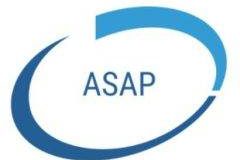CAN HYDROLOGIC MODELING BE A SOLUTION FOR TRANSBOUNDARY AGREEMENTS?
Yusuf M. Mohamoud and Awes S. Karama
Abstract
Due to the colonial partition, many rivers in Africa are transboundary rivers shared by several riparian countries. Transboundary rivers in Africa have serious river basin management challenges mainly due to a lack of meteorological and hydrometric data limitations. Many African countries lack the technical knowledge and the financial resources needed to manage large river basins such as the Juba, Shabelle, Niger, Senegal, Zimbabwe, Nile, and Congo. In developed countries where meteorological and hydrometric data are available, river basins such as the Colorado and the Chesapeake in the United States are managed with hydrological models. Hydrological models require meteorological data as model input data and hydrometric data for model calibration and validation. In recent years, the acquisition of freely available global satellite data products offers readily model input data for developing countries with limited data acquisition capabilities. The study develops a watershed model for the Juba River Basin (JRB) shared by Somalia, Kenya, and Ethiopia. The HSPF (Hydrological Simulation Program-Fortran (HSPF) was selected for the study. Several satellite precipitation and evapotranspiration data products were evaluated, and CHIRPS precipitation and MERRA-2 evapotranspiration products gave the best model performance results. The acquisition of the satellite data products resolved the precipitation and the evapotranspiration model input data limitations. The Nash-Sutcliffe efficiency (NSE), Percent Bias (PBIAS), and coefficient of determination (R2) performance metric ratings ranged from very good to satisfactory. The model simulated 39 years of daily flow data at selected sites in Somalia and Ethiopia. The simulated flow is suitable for addressing the river basin management solutions and establishing low flow indices and flood frequency analyses required for setting the groundwork for transboundary water management cooperations among riparian countries. The proposed solution generates daily river flow data anywhere in the basin. Given the meteorology and the hydrometric data limitations faced by many countries in Africa, applications of readily and freely available global satellite data offer solutions to the data scarcity faced by many countries in Africa. The paper presents a cost-effective river basin management solution for developing countries with limited river basin management data.
ASAP UPCOMIMG CONFERENCE
|
Author |
Title and Topics |
Review Status |
|
|
Agriculture |
|||
|
1 |
Abdou Issa Osman |
Juba River Agricultural Production |
Complete |
|
2 |
Aden Abdullahi Hassan |
Are Recurrent Catastrophic Drought Conditions Unavoidable in Somalia? |
Under Review |
|
3 |
Ahmed A. Hussein |
Sesame Seeds: A Valuable Crop for Somalia |
Under Review |
|
4 |
Mohamed B. Ahmed |
Development Strategies for Fall Army Worm (FAM) in Somalia |
Under Review |
|
5 |
Hussein Mao |
Tissue Culture: The Game Changer for the Banana Farmers in Somalia |
incomplete |
|
6 |
Hussein Mao |
SIMAN F1 hybrid: The Game Changer for Maize Production in Somalia
|
incomplete |
|
Water Resources |
|||
|
7 |
Awes Karama |
Flow Analysis of Juba and Shabelle in Somalia |
Complete |
|
8 |
Yusuf Mohamoud |
Water Harvesting-The Neglected Water Resources |
Complete |
|
9 |
Mohamoud Elmi |
Review of Groundwater Resources in Somalia |
Complete |
|
10 |
Yusuf Mohamoud |
Juba River Basin Planning and Management |
Complete |
|
11 |
Mohamed A. Hussein |
Water Resources in Somalia and How to manage |
Under review |
|
Environment |
|||
|
12 |
Yusuf Mohamoud |
Land degradation in Somalia |
Under Review |
|
13 |
Ibrahim Ali |
Selenium and iodine interactions with calcareous and gypsiferous mineral phases from Somalia |
Under Review |
|
14 |
Yusuf Mohamoud |
Importance of Data Science: Its roll for environmental management |
Under Review |
|
Climate Change |
|||
|
15 |
Omar Mohamud |
Climate Change: An Existential Threat to Somalia. |
Under Review |
